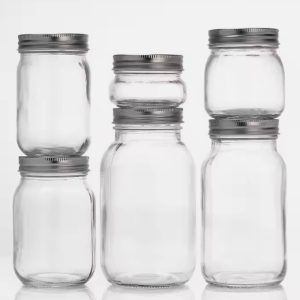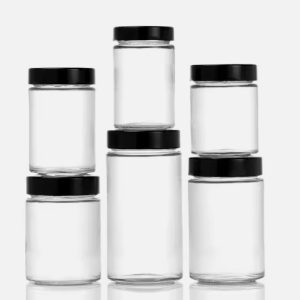The debate between glass and plastic bottles has been ongoing for years. Each material has its own advantages and disadvantages, but one of the most significant considerations for manufacturers and consumers alike is the cost. So, are glass bottles more expensive than plastic bottles? This article delves into various factors that influence the cost of both types of bottles, helping you understand the true financial impact.

Manufacturing Costs
Glass Bottle Manufacturing Process
The manufacturing process for glass bottles is intricate and energy-intensive. It begins with raw materials like sand, soda ash, and limestone. These materials are melted in a furnace at extremely high temperatures to form molten glass. The molten glass is then molded into bottles using different forming techniques, such as blow-and-blow or press-and-blow methods. The bottles are then annealed to relieve internal stresses and inspected for quality.
Plastic Bottle Manufacturing Process
On the other hand, plastic bottles are typically made from petroleum-based products like polyethylene terephthalate (PET). The process involves melting plastic pellets and injecting them into molds to form preforms. These preforms are then heated and stretched to form the final bottle shape through blow molding. The process is faster and requires less energy compared to glass bottle production.
Material Costs
Cost of Glass
Glass, being made from natural raw materials, tends to have higher material costs. The purity and quality of the glass can also affect the price. Soda-lime glass is commonly used for bottles, but specialty glasses like borosilicate can be more expensive due to their superior properties.
Cost of Plastic
Plastic materials, especially PET, are generally cheaper to produce. The cost of plastic can fluctuate based on oil prices, as petroleum is a key component. However, economies of scale and advancements in recycling technology have helped keep costs relatively low.
Environmental Impact and Costs
Environmental Impact of Glass Bottles
Glass bottles are highly recyclable and can be reused multiple times without losing quality. However, the recycling process for glass is energy-intensive and requires significant resources. Despite this, glass is biodegradable and does not contribute to long-term pollution.
Environmental Impact of Plastic Bottles
Plastic bottles are also recyclable, but the process can be more complex and less efficient. Many plastic bottles end up in landfills or oceans, contributing to pollution. The environmental cost of plastic is higher due to its long degradation period and potential harm to wildlife.

Longevity and Durability
Durability of Glass Bottles
Glass bottles are known for their durability and longevity. They can be reused and refilled multiple times, making them a sustainable choice for beverages and other products. However, they are prone to breakage, which can be a disadvantage in certain situations.
Durability of Plastic Bottles
Plastic bottles are lightweight and resistant to breaking, making them convenient for transportation and use. However, they have a shorter lifespan compared to glass and may degrade over time, especially when exposed to heat and sunlight.
Consumer Preferences and Perceptions
Health and Safety Concerns
Consumers often perceive glass bottles as a safer and healthier option compared to plastic. Glass does not leach chemicals into the contents, which is a concern with certain plastics, especially when exposed to heat.
Aesthetic Appeal
Glass bottles are often associated with premium products due to their aesthetic appeal. The clarity and weight of glass can enhance the perceived value of the product, making it a preferred choice for high-end beverages and cosmetics.
Industry Trends
There is a growing trend towards sustainable packaging solutions. Consumers and businesses are increasingly opting for environmentally friendly options, which has boosted the popularity of glass bottles despite their higher cost.
Technological advancements are continuously improving the efficiency and cost-effectiveness of both glass and plastic bottle production. Innovations such as lightweight glass bottles and biodegradable plastics are changing the landscape of packaging.

Conclusion
In conclusion, glass bottles are generally more expensive than plastic bottles due to higher material and manufacturing costs. However, their environmental benefits, durability, and consumer appeal often justify the price difference. The choice between glass and plastic ultimately depends on the specific needs and priorities of the business or consumer.





